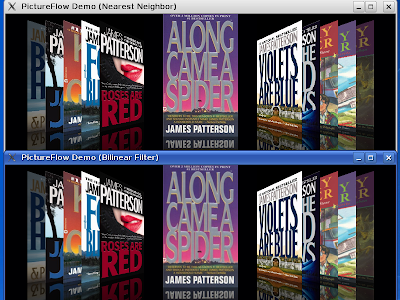I know I should be doing something "useful", but the fresh-from-oven OpenSUSE 10.3 is just too good to skip. Thus, I decided to waste a weekend to try it. In short: it's very solid and attractive, without doubt the best OpenSUSE release so far.
Installation (and upgrade) was easier than ever. Now we need only one CD. I choose KDE of course. For most users, this means getting openSUSE-10.3-GM-KDE-i386.iso through http/ftp/torrent, burning it, and using it to perform the installation.
The first boot after the installation (yes, it's green again!) shows that boot time is needed really improved. My laptop needs 54 seconds until I get a fully functional KDE desktop, it takes at least 70 seconds with OpenSUSE 10.2, 90 seconds with Windows XP.

Post installation, I had little problem trying to connect to Internet using my DSL modem, even after the usual steps of removing NetworkManager and installing KInternet. It turned out, somehow smpppd is not activated by default. If you experience the same problem, the solution is easy: run YaST, System, System Services (Runlevel) and then enable smpppd. While you're there, try to tweak some services and turn off what you don't need (e.g. for pure desktop, no need for postfix).
And while doing software management, one quickly notices that package management is thousand times better compared to the previous versions. With OpenSUSE 10.1/10.2, doing things with packages is just unbearable without Smart, IMO zmd along with its Mono stuff are not for mere mortals. However, now zmd is gone, zypp is already greatly improved and thus making application installation in OpenSUSE 10.3 significantly faster than ever. Even better, if you are used to subscribe to alternative repositories (e.g. Guru, Packman, KDE:Backports, etc), there is a new Community Repositories module in YaST which allows you to add common non-official repositories with only few mouse clicks. This is extremely simple even for novices.

But the best is yet to come. Now OpenSUSE offers one-click application install. This is a new feature which will be appreciated by typical desktop users. Rather than using YaST to install new software, you just go to http://software.opensuse.org/search, search for the program, and then click on the 1-Click Install button to start the installer, which will download the packages (and handle the dependencies, if necessary) and install them for you. It couldn't be easier, extremely useful for Linux newbies. It also resembles the way most applications are installed in Windows, a plus for those who switched or want to switch.
Of course you can still use the familiar YaST to install and remove programs as usual. At first, maybe you'll be a bit surprised because the icons in YaST have been changed. Looks like these new icons are designed to match Tango icon sets. If you prefer the good old Crystal style, just follow binner's tips: remove package yast2-theme-openSUSE and install yast2-theme-openSUSE-Crystal instead.
As with any fresh Linux box nowadays, you need to perform the extra steps to install non open-sourced stuff so that you can enjoy e.g. your MP3 music. With the new click-and-install, this also couldn't be easier. Just go to http://opensuse-community.org/Restricted_Formats/10.3 and click on codecs-kde.ymp link. The same installation wizard will pop-up, then just follow the step-by-step instructions. In addition to multimedia codecs, you can have the option to install Java (1.5 or 1.6) and Flash plug-in as well. All with few mouse clicks.
The same easy procedures apply also for installation of proprietary NVIDIA or ATI driver. For example, for ATI graphics card, just read the super-simple instructions, again a matter of clicking a link (even a child can do that!). You don't even need to know the model of the graphics card.
Conclusion: with one CD install, faster boot, easier package management, single-click application install, OpenSUSE 10.3 is definitely worth to try. For 10.2 users: upgrade!


